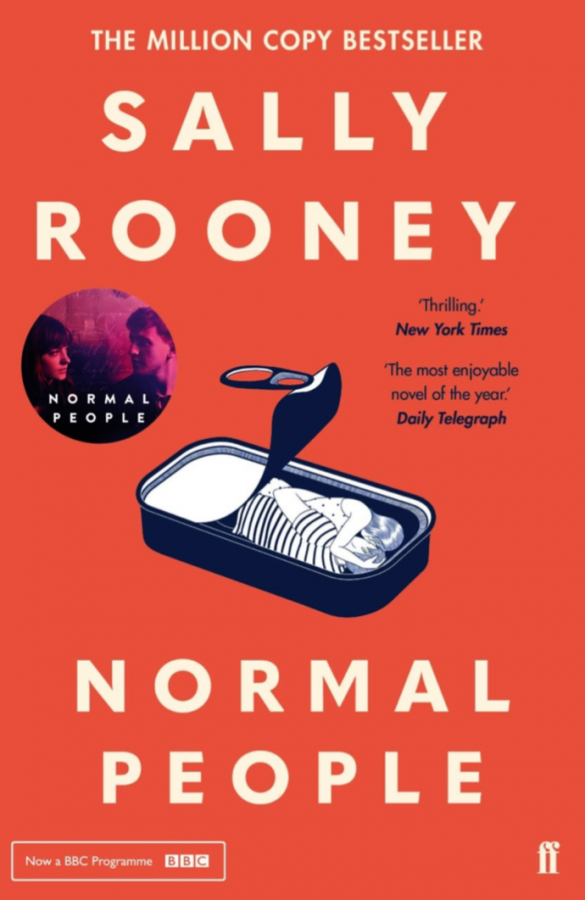Normal People, Unusual Book
The intricacy of coming of age, romantic love, and modern concerns is found in such a real, honest way in Sally Rooney’s novel Normal People, that it allows the reader to realize the overwhelming amount of artificiality our modern world possesses. In this literary piece, Rooney breaks the notions of wealth equating to popularity and contentment, individual lives lacking complexity, and love being a block-buster scheme. She does this naturally and seamlessly, creating one of the most significant novels written in the past decade.
From the book’s first passage, the reader comprehends that Rooney’s writing comes with a deep understanding of messy human emotions. She writes characters beautifully, especially the two main ones, Marianne and Connell. In Sligo, a small town in Ireland, both go to the same High School and are about to graduate. Connell is an only child, living with his young single mom Lorraine, who works as the cleaning lady at Marianne’s house. On her side, Marianne lives with her mom and older brother, and is a part of Ireland’s upper class. The story follows them as they fall in love and attend college in Dublin. On the surface, this story can be described as two people finding and loving each other through their transition to adulthood, but messing up continuously due to severe communication issues. Yet, Rooney takes a knife at these two characters and slices the relationship apart, dissecting every tiny bit of it. Similar to Hanya Yanagihara’s groundbreaking novel A Little Life, nothing is left hidden or unmentioned. Every detail, thought, and motivation behind the characters’ actions is revealed by the omniscient narrators. This is fascinating, as the authors lay it all out and give in to the true rawness of the human experience. Not only can the readers understand the characters, but are able to relate to them in certain aspects despite the use of specifics.
Normal People has a structure that makes readers appreciate the storyline and the plot. Each chapter begins with a moment, a significant event happening for Connell or Marianne in the present. It’s described vaguely, and the author then includes flashbacks to give the reader context for the main event of the chapter. This way, tension and suspense are built. The disordered timeline gives the book the opportunity to maintain its momentum, as opposed to a linear timeline where the audience would have to wait to get to intense moments and the reading becomes predictable. A contrasting example is Sofia Coppola’s movie, Lost in Translation, where a linear storyline makes it dull and unamusing at times. Rooney’s style of revealing certain occurrences at times when the plot is seemingly stirring down is a clever move to keep her audience engaged, and it works.
Books need to have a balance between a plot that is entertaining yet meaningful, although not sad or romantic in an overly exaggerated way. Rooney touches on the subject of class and creates a social critique by doing so. Nevertheless, she does not explicitly depict the issue. It’s touched on several times, like when both Connell and Marianne earn college scholarships which bring big economic support to students. Connell applies for the grant because of his economic status. Marianne, having rich parents, applies to boost her ego and prove herself to her family. Highlighting the contrast of class in a romantic relationship and acknowledging privilege gives a novel about two young adults relatability and accuracy in the context of our world. Rooney also manages to beautifully craft a love story damaged by the impacts of abuse, trauma, and the navigations of issues like these. There’s a tendency to dismiss high school relationships as temporary. Many films and books have exaggerated love stories by decorating them with grand gestures and drama, which no real person could relate to. Normal People, however, similar to Call Me by Your Name, presents a simple, raw story between two young individuals that love each other but are met with common issues that many young adults face. The writer acknowledges individuals grow as they age, that privilege is present in even the fairest of situations, and how relationships can shape one’s sense of identity.
Something is intoxicating about Marianne and Connell’s story; it feels so unrefined that anyone could either relate to it or learn from it. Normal People has been adapted into a twelve-episode limited series, a pleasant alternative for reading the book, although not nearly as good. Getting a look into these people’s stories and Sally Rooney’s literary universe is very much worthwhile.




